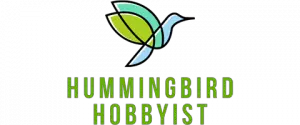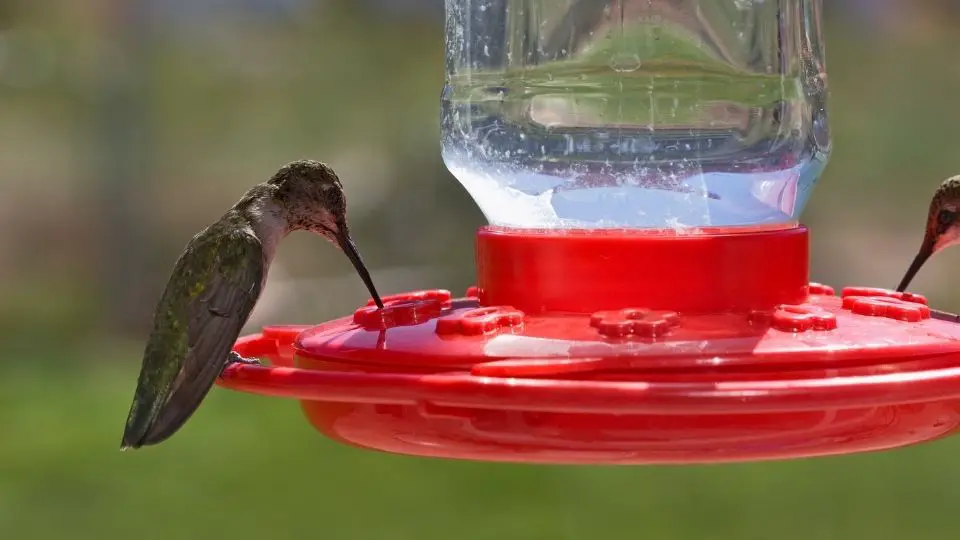Honey bees, carpenter bees, ants, and wasps are spring and summer guests to hummingbird feeders. These bugs scout for the sugary nectar and flowers during the spring seasons. During these explorations, they find the hummingbird feeders and compete with the hummingbirds that also feed on the sugary nectar.
Hummingbird keepers should be cautious as this competition limits a bird’s food supply. Try the following methods to keep bees and other pests away from your feeders and also check out the DIY bee guard for hummingbird feeders at the end of this article.
Table of Contents
What are the best ways to keep bees away from hummingbird feeders?
Use a Dish Feeder
A dish feeder or saucer type design over the inverted bottle design since the flat saucer-shape design minimizes leakage of feeds. Even though an inverted bottle drains slowly into the feeding chamber, on a sunny day, the sweet nectar inside might leak faster and then spill over.
A flat saucer shape is not prone to such air pressure. Dish feeders prevent leaking, which attracts critters, including bees.

Add a Nectar Guard
Nectar Guard tips are flexible membranes placed at the opening of the feeding ports. This membrane easily opens when the hummingbirds insert their beaks. These tips create a barrier that prevents flying insects from penetrating the feeding ports.
Reduce the Sugar in the Nectar
Honey bees enjoy very-sweet nectar, but hummers do not mind their nectar low on sugar. Beekeepers use a 2:1 ratio for their sugar and water, respectively. On the other hand, the hummingbird can use a lighter balance of 1:5 of sugar to water. Keeping the hummingbird nectar more diluted will make the bees lose interest in the hummingbird feeders.
Move Your Feeder Often
To keep bees away, one can change the location of the feeders or even place them indoors for about one to two weeks until the bees find another venue. This will not affect the birds since once the feeders are placed outside, the birds will come back.
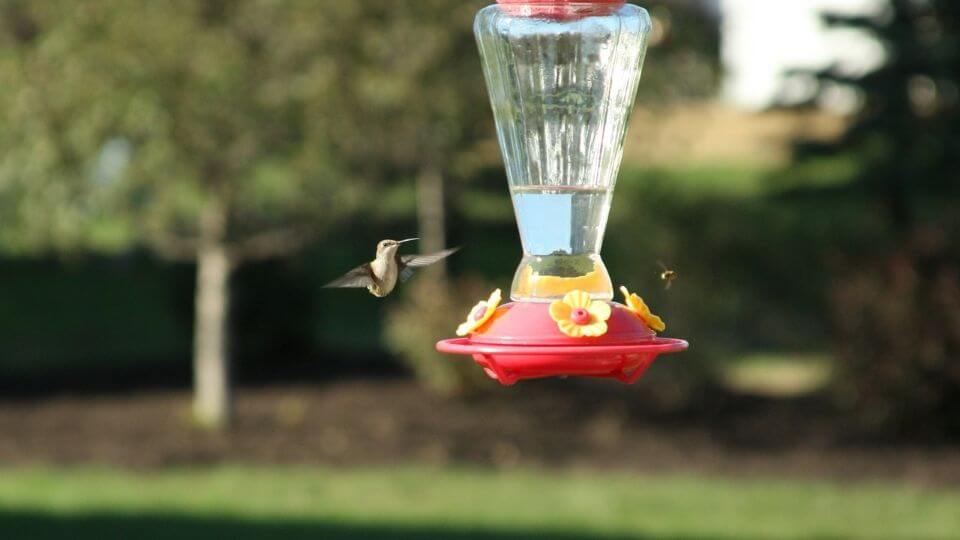
Hang Your Feeder Under a Tree
Hanging the feeders under a tree can help to bee-proof the feeders. Bees and wasps love to forage under direct sunlight, not in shaded areas. Bees need sunlight to navigate better; shaded areas can hinder how bees navigate in new environments.
Avoid Using the Color Yellow
Bees are attracted to yellow because they often associate it with yellow pollen. On the other hand, they are not attracted to red feeders and will bypass them. Bees and wasps are good at finding and remembering their sources by sight and smell, so a red feeder will certainly be avoided if it is not leaking.
Do use a Red Saucer Feeder
Hummingbirds are attracted to the color red, but bees are more attracted to color yellow. Using a yellow feeder will only attract bees.

Place your Feeder Next to a Pollinator Garden
Placing feeders near attractive flowers will be an attractive alternative. Pollinators will flock toward those flowers and leave the feeders alone. Make sure to plant a garden for pollinators, as hummingbirds are sure to compete for the nectar of ornithophilic plants.
Our friends over at Honeybee Hobbyist have shared a fantastic list of bee-repellent plants and flowers, as well as multiple other ways to keep bees away.
NOTE: Please test their recommendations before opting for more environmentally harmful extermination practices.
Keep Your Feeder Clean and Neat
A cleaner nectar feeder is highly likely to be bee-free than a dirty one.
Cleaning a hummingbird feeder is an excellent way to maintain your feeders in a like-new condition.
Set up a Bee and Wasp Feeder
Placing a small bowl of sugar water about 6 feet away from the
Add a Fake Wasp Nest
Placing a fake wasp nest can trick other wasps scouting out the area to think that there is already another wasp colony that has already established itself.
Fake wasps nests are also effective at keeping carpenter bees away. Bees avoid wasps, as wasps can kill carpenter bees and prey on their larvae. Installing a fake wasp nest will elude both carpenter bees and other neighboring wasps.
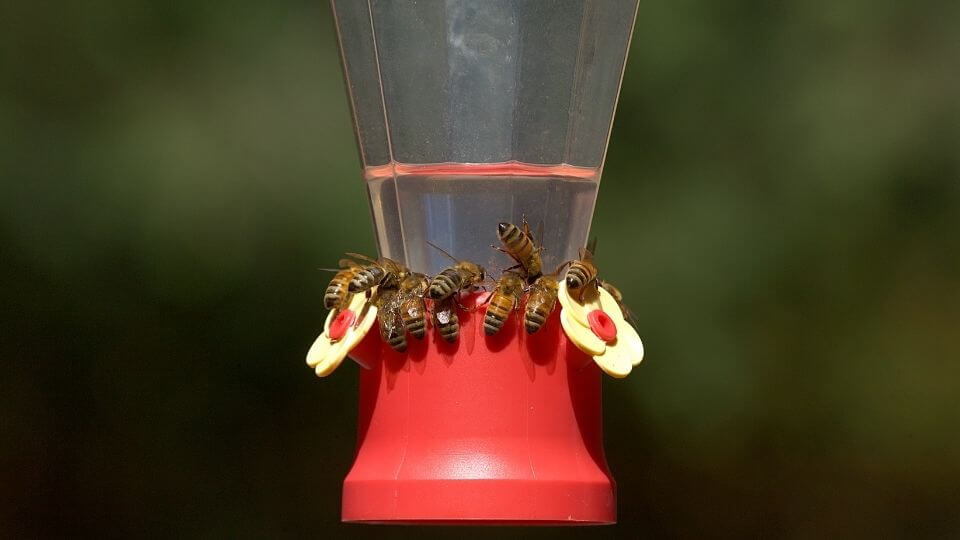
Does Peppermint Oil Keep Bees Away From Hummingbird Feeders?
Bird lovers claim peppermint essential oil repels bees when they apply it to their birdfeeders. Peppermint does not bother hummers, but it is a good repellent for bees, and it will also keep wasps away. Dabbing the minty on the feeding ports or putting a peppermint plant near the feeder is an excellent way to get rid of bees.
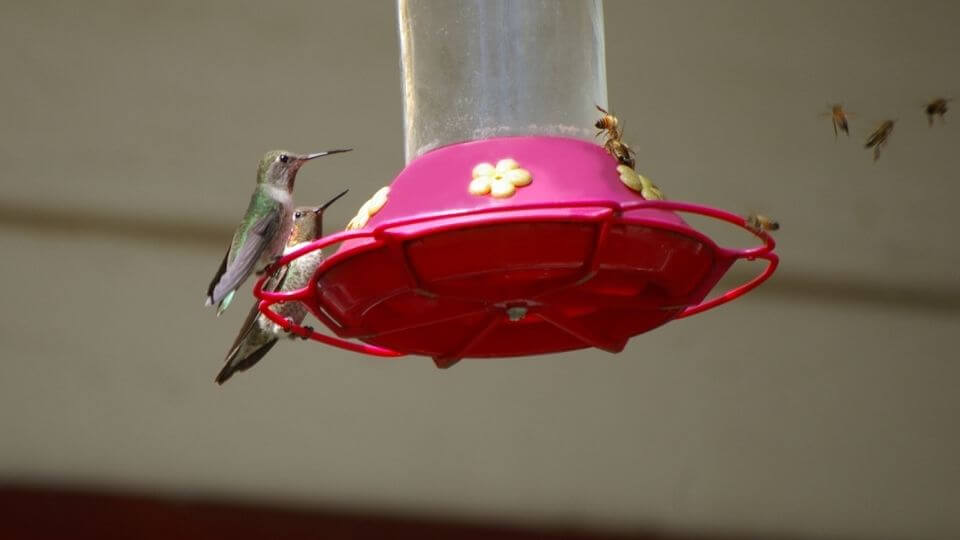
How Do You Keep Bees From Attacking Hummingbird Feeders?
Ways to repel bees from Hummingbird feeders include: opting for a saucer style feeder, adding bee guards, using a color that does not attract bees, adding natural bee repellants like cinnamon or peppermint. Other methods include moving your feeder to a new location, looking to see if there are any leaks, dialing down the nectar's sweetness, and cleaning the hummingbirds feeders frequently.
How Do I Make a Bee Guard for Hummingbird Feeders?
Bee guards allow hummingbirds to continue to reach nectar, but it limits insects from getting into the feeders. Slip bee guards onto the feeding holes of the feeders.
Using a DIY bee guard for the
DIY Bee guard for Hummingbird Feeder
A DIY Bee Guard for
Another DIY for the hummingbird feeders is using straws – cutting them and shaping them into yellow flower-shaped bee guards that only the hummers’ beaks can poke into. Bees and any other flying insect cannot fit into feeder ports.
Nectar Guard tips have a flexible membrane that opens when the bird’s beak passes through it and shuts up tight when the beak is removed, creating a barrier that any flying or crawling insect can’t penetrate. The nectar guard tip can slide onto the back of each feeding port to enable the beak to reach the nectar that is far placed in the jar.
